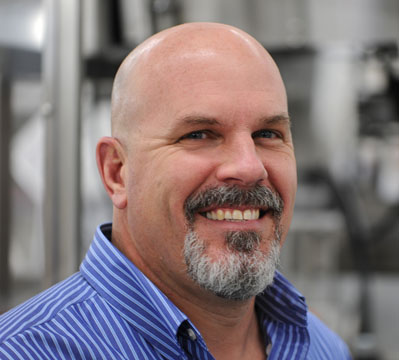Raman Sehgal, founder and Global President at ramarketing sets the scene by saying: “Having established a client base and physical presence in the US during the last few years, we’ve learnt a great deal along the way with respect to working with pharma and life science companies in North America.” He adds: “In our experience, doing business in the US is a major investment and not one to take lightly. In the major cities, salaries and the cost of living is much higher than most UK cities, except perhaps London. Having said that, the market is huge and brimming with potential revenue. It’s not called the land of opportunity for no reason, right?”
The work ethic in the US is phenomenal, he notes: “I am always impressed by the dedication and long hours that US professionals are willing to commit. Lots of meetings, back-to-back, is also very much the norm. I suspect it depends on the specific location, but the people I come across are generally very friendly and eager to help.”
The US pharma and biotech market remains the biggest in the world. The hub where ramarketing is based in Cambridge/Boston is a particular hot spot with some incredible biotech drug development. New York and Raleigh-Durham also remain major hubs on the east coast for pharma and life sciences. San Francisco and San Diego on the West Coast are equally active, particularly for med device and biotech.
Equally positive, Andrew Henderson, Sales and Marketing Director at Sterling Pharma Solutions, comments: “The US has been a key growth market for us during the last 2 years. Currently, the global pharmaceutical market has around 5000 small molecule drugs in the prelaunch phase or the early stages of development ... and around 70% of these are with US-based companies. This has primarily been driven by the favourable financial landscape and IPO environment in the US.”
Small to mid-sized pharmaceutical companies in the US tend to want to outsource to local contract service providers during the early phases of development, he observes, adding: “This is primarily because companies who may only have one or two molecules want to be able to regularly visit the facility, making both location and travel access critical.”
“As projects move further down the line, from Phase II to launch, for example, companies become more comfortable with outsourcing further afield — with more focus falling on scale-up, validation and complex chemistry capabilities. As a result, many European CDMOs are looking for a foothold in the US to meet these demands from potential customers and capture projects earlier in the development stage.”
As part of its global manufacturing network, Cambrex has a number of API manufacturing sites in the US. “What is noticeable at the national level in the US is that there is increasing consolidation between contract development and manufacturing service providers,” says Brian Swierenga, Vice President, Operations and Site Director, Cambrex High Point, “especially those supporting the clinical phases of development.”
“This is true of both US-based companies looking to build market share, but also overseas companies looking for a stronger US presence. Previously, whereas a small CMO could build a business around a specific offering such as Phase I GMP supply, solid state property characterisation and control, or analytical testing, larger integrated CDMOs are consolidating these services. These integrated service providers offer customers a simpler supply chain and a more coherent development package.”
“Additionally,” he adds: “we’ve seen a rise in interest from pharmaceutical companies looking to harness breakthrough technologies that have the potential to reduce costs and increase the speed to market for new molecular entities. In the post-blockbuster era, which the industry now faces, companies are dealing with development portfolios of low-dose, high-potency compounds with smaller potential patient populations. This combination of lower manufacturing costs and niche molecules has prompted significant interest and investment in new chemical manufacturing technologies such as continuous processing.”
The packaging perspective

Glenn Siegele, Omega Design Corp.
According to Glenn Siegele, President of Omega Design Corporation, the federal administration’s pro-business agenda has increased manufacturing opportunities within the pharmaceutical sector. Omega Design Corporation, which provides packaging solutions for the pharmaceutical, nutraceutical and consumer healthcare industries, has seen first-hand the uptick in pharma manufacturers based in the American Northeast that are beginning to spend comfortably again after the last recession resulted in heightened fiscal cautiousness.
“A more favourable economic outlook has encouraged pharmaceutical manufacturers to actually begin investing again in manufacturing opportunities, rather than only brace for potential future downturns,” said Siegele. Additionally, he noted, the financially sound Baby Boomer population is increasing their spending on medicine in general, which, from a business standpoint favours pharmaceutical companies and, by extension, their vendors.
Siegele also stresses that it is crucial to overcome the obstacle of high manufacturing costs in the United States; buyers are continuously dealing with the consequences of choosing an attractive price compared with a quality product. Furthermore, Siegele asserts, a pervasive culture of entrepreneurism has catalysed an impressive movement in technical innovation, setting the stage for further developments in US operations. “American businesses have contributed greatly toward such rapid growth in the industry, specifically regarding robotics, computer processing power and granular product and consumer data,” he concludes.
And, according to Tom Stringer, Director of Technical Sales for Aptar CSP Technologies, a leader in packaging solutions that ensure product protection, enhance brand recognition and improve consumer experiences, an increase in sensitive medicines makes it likely that demand will continue to improve for Aptar CSP Technologies’ signature active packaging solutions, which scavenge moisture, oxygen and other gases from the headspaces of blister, bottles, vials, etc. This includes the sort of enhanced packaging solutions required to protect delivery platforms for high priority vaccines and other essential drugs.
Blister packaging in particular has promise in the US. It’s well known that most medicines are placed in blisters in Europe, but America still heavily favours bottles and vials. This presents an opportunity for blisters to gain market share in the US, especially as increasing patient compliance continues to be of high importance and connected device/packaging technologies are being developed to advance patient adherence.
Ensuring patient compliance is a goal that is well-suited to blister packaging. However, as more and more drugs continue to require enhanced protection against moisture, oxygen and other gases, a major challenge is that blisters, although offering unit-dose-level protection, traditionally haven’t had absorptive properties. In other words, you couldn’t just pop in a desiccant as you could with a bottle or vial.

Andrew Pietrangelo, Antares Vision North America
This challenge is the impetus behind Aptar CSP Technologies’ Activ-Blister solutions, which help to control the internal atmosphere of individual blister cavities, allowing for improved product performance and enhanced shelf-life. Offering moisture, oxygen and combination absorption, the technology can be applied without the use of adhesives and without changes to the existing footprint of a packaging line. Activ-Blister solutions can be incorporated into a wide range of blister packaging formats, including push-through blisters, peel/push blisters, cold-form foils and high barrier films containing Aclar laminates.
Finally, Mr Stringer does not see particular disadvantages in terms of geography, politics, population, regulation, funding etc. in the US. He sees opportunities for companies such as Aptar CSP Technologies that design and manufacture packaging and packaging materials with commercial implementation in mind, and with flexible and ongoing improvement strategies that benefit the sales customer and end user.
Consumers today are much more engaged, have a higher level of influence and expect greater transparency about the products they purchase. “Employing end-to-end traceability, manufacturers and distributors will have the ability to circumvent counterfeit activities that pose serious and sometimes life-threatening health risks to patients, protect their brands and increase consumer loyalty,” says Andrew Pietrangelo, President, North America, Antares Vision.
Serialisation and Industry 4.0 are, together, opening the door to a new frontier with synergies and added value through production and packaging processes, data analysis and data exchange. As the United States moves toward full implementation of the Drug Supply Chain Security Act item-level-traceability deadline in 2023, companies will have more tracking capabilities to reduce logistics costs, increase flexibility and pinpoint more rapidly and precisely where there may be supply chain failures.1
Adds Andrew: “While managing the serialisation data flow to connect all distribution stakeholders, manufacturers and repackagers, the Antares Vision VRS solution, empowered by ATS4, will continually improve companies’ supply chain data exchange performance. This turnkey solution easily integrates with existing systems, provides teal-time information on service performance, traffic statistics, geolocation and customised analytics.”
Reference
1. www.gs1us.org/industries/healthcare/standards-in-use/dscsa.
NB: This article will appear in the March 2019 issue of Manufacturing Chemist. A recent digital edition is available online.
Part II of this article is available here.
